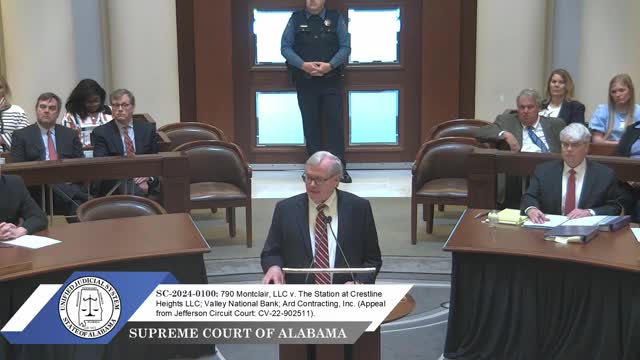Birmingham developers address access issues for new 277-unit apartment complex
June 07, 2025 | Supreme Court of Alabama, Judicial, Alabama
This article was created by AI summarizing key points discussed. AI makes mistakes, so for full details and context, please refer to the video of the full meeting. Please report any errors so we can fix them. Report an error »

In a recent session of the Alabama Supreme Court, discussions centered around a significant property dispute involving a planned 277-unit apartment complex and its access routes. The case highlights the complexities of property rights and easements, which could have lasting implications for local development and community infrastructure.
The core issue arose from the construction of the apartment complex, which required two means of vehicular access as mandated by the city of Birmingham. However, due to a subdivision that cut off access to Dan Hudson Drive, the developers were left with only one entry point. To address this, they modified existing infrastructure by removing a section of sidewalk and curb to create a new main entrance, replacing it with a crosswalk.
This alteration has sparked a legal debate over property rights and the interpretation of a 2018 easement that governs the use of the land. The plaintiffs argue that their property rights have been infringed upon due to the changes made by the developers. They are seeking a ruling that would clarify whether the access facilities mentioned in the easement include the sidewalk and curb that were altered.
The discussions also revealed that the developers had already invested a substantial amount—between $4 million and $14 million—into the project before a temporary restraining order (TRO) halted construction. After the TRO was lifted, the developers continued their work, raising questions about compliance with legal requirements and the responsibilities of all parties involved.
As the court deliberates on this matter, the outcome could set a precedent for future developments in the area, particularly regarding how easements are interpreted and enforced. The implications of this case extend beyond the immediate parties, potentially affecting local residents and future construction projects in Birmingham. The community is watching closely, as the decisions made here will influence not only property rights but also the accessibility and planning of urban spaces.
The core issue arose from the construction of the apartment complex, which required two means of vehicular access as mandated by the city of Birmingham. However, due to a subdivision that cut off access to Dan Hudson Drive, the developers were left with only one entry point. To address this, they modified existing infrastructure by removing a section of sidewalk and curb to create a new main entrance, replacing it with a crosswalk.
This alteration has sparked a legal debate over property rights and the interpretation of a 2018 easement that governs the use of the land. The plaintiffs argue that their property rights have been infringed upon due to the changes made by the developers. They are seeking a ruling that would clarify whether the access facilities mentioned in the easement include the sidewalk and curb that were altered.
The discussions also revealed that the developers had already invested a substantial amount—between $4 million and $14 million—into the project before a temporary restraining order (TRO) halted construction. After the TRO was lifted, the developers continued their work, raising questions about compliance with legal requirements and the responsibilities of all parties involved.
As the court deliberates on this matter, the outcome could set a precedent for future developments in the area, particularly regarding how easements are interpreted and enforced. The implications of this case extend beyond the immediate parties, potentially affecting local residents and future construction projects in Birmingham. The community is watching closely, as the decisions made here will influence not only property rights but also the accessibility and planning of urban spaces.
View full meeting
This article is based on a recent meeting—watch the full video and explore the complete transcript for deeper insights into the discussion.
View full meeting
